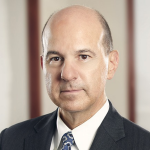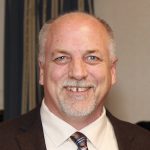 This morning, Senator Thom Tillis (R-NC) introduced the Patent Eligibility Restoration Act of 2022, S.4734, which would amend the U.S. Patent Act to clarify the application of 35 U.S.C. Section 101 to certain technologies. While the bill was welcomed by many in the intellectual property (IP) community, since it would abrogate or weaken many of the seminal decisions that have arguably caused confusion on eligibility over the last decade-plus, some have called the bill out as being far from perfect. Questions remain with respect to the text’s language regarding the definition of “technological” and what it means for software patents, for instance, as some commenters note below.
This morning, Senator Thom Tillis (R-NC) introduced the Patent Eligibility Restoration Act of 2022, S.4734, which would amend the U.S. Patent Act to clarify the application of 35 U.S.C. Section 101 to certain technologies. While the bill was welcomed by many in the intellectual property (IP) community, since it would abrogate or weaken many of the seminal decisions that have arguably caused confusion on eligibility over the last decade-plus, some have called the bill out as being far from perfect. Questions remain with respect to the text’s language regarding the definition of “technological” and what it means for software patents, for instance, as some commenters note below.
Still, after the disappointment from the U.S. Supreme Court’s outright dismissal of American Axle earlier this summer, Tillis’ legislation has renewed hope for some that there may be a fix yet for what Judge Paul Michel refers to below as “the confused, chaotic mess of eligibility law.”
Here is what our respondents had to say about the text of Tillis’ latest attempt to reform Section 101.
Alden Abbott , Mercatus Center at George Mason University
, Mercatus Center at George Mason University
“If enacted, Senator Tillis’s Patent Eligibility Restoration Act of 2022 would substantially strengthen competition in the American economy. By eliminating judicially created patent eligibility limitations that harmfully discourage patenting activity, the Act would stimulate the development of new and highly valuable innovative patented technologies. These technologies would in turn bring forth new products, processes, and services that would promote market entry and enhance competition in myriad U.S. industries. The net welfare of both American producers and consumers would rise, and U.S. economic growth would be stimulated. The end result would be a more innovative, creative, and larger American economy.”
James Edwards , Consultant
, Consultant
“Sen. Tillis deserves much credit for taking the initiative to straighten out 101’s judicially created mess. He’s launched the boat to carry American patenting to the land of reliability and predictability regarding patent-eligible subject matter.
The U.S. Supreme Court has rendered eligibility doctrine untenable. Alice, Mayo and the string of judicially created exceptions to 101’s plain language must be eradicated. Sens. Tillis’s and Coons’s 2019 marathon 101 hearings firmly established that fact. It’s been proven repeatedly with every nonsense judicial ruling and reversal over the past decade.
Restoring patent eligibility doctrine to a broad threshold question is vital for ensuring U.S. innovation. The Patent Eligibility Restoration Act makes for a good starting point toward that end. The journey will take a couple of Congresses.
As this boat sails through the rough waters of the legislative process, it will undergo changes. As Gene Quinn observes, the legislative language may need to clarify that Alice is dead, that software patents and computer-enabled inventions are indeed patent-eligible subject matter in the United States. They were before the Supreme Court set 101 adrift for a desert island.
Patent law, just as any law, should be crafted in the legislative branch. To its credit, S. 4734 has a good deal of specificity—Congress way too often punts detail-writing to bureaucrats.
Ironically, SCOTUS’s denying cert on American Axle led to legislative action. Hopefully from here on, the Supreme Court will quit legislating patent law from the bench.”
 Jeff Hardin, Inventor
Jeff Hardin, Inventor
“I appreciate Congress putting effort into patent eligibility, but at first glance, the exclusions/conditions present a concern. Sure, per paragraph (a), whoever invents/discovers a useful process…or useful improvement [for a machine/manufacture] may obtain a patent for that process, useful improvement, etc., but obtaining such a patent would be subject to certain exclusions and conditions. One of those conditions? See paragraph (b)(2)(A):
‘… a person may obtain a patent for a claimed invention that is a process described in such provision if that process is embodied in a machine or manufacture, unless that machine or manufacture is recited in a patent claim without integrating, beyond merely storing and executing, the steps of the process that the machine or manufacture perform.’
Well, what if the storing and execution process steps embodied in a machine or manufacture improves the machine or manufacture? Per the proposed text, this is not patent eligible. This very thing—a method/process that improves the machine/manufacture on which it executes—was one of the remaining patent eligible nuggets under the current Mayo/Alice framework, and it appears to be lost in this proposal. Even the USPTO guidance under Iancu via integration into a practical application made room for such patents.
So, this proposal is problematic for those in software, for example, because if you claim a method/process comprising storage and execution steps embodied in a machine/manufacture, even if those steps improve the machine/manufacture, it doesn’t seem this process is patent eligible unless somehow the steps do more than store and execute. That seems strange because that’s where the improvement of the machine/manufacture is accomplished.”
Scott Hejny , McKool Smith
, McKool Smith
“With respect to life sciences, the proposed Bill expands patent coverage to ‘modified’ human genes in which human genetic material ‘is isolated, purified, enriched, or otherwise altered by human activity’ or is ‘otherwise employed in a useful invention or discovery.’ This would seemingly enhance patent protection for new advances in genetic treatments and discoveries. The Bill also expands coverage to, for example, mathematical formulas if those formulas are included in ‘a useful invention or discovery.’ This would seem to encompass cases like American Axle, where inertial balancing of marine drive shafts was determined to be ineligible for patenting by the Federal Circuit. There will be questions about the meaning of ‘useful invention or discovery’ since the Bill proposes that ‘useful’ be defined as having ‘a specific and practical utility from the perspective of a person of ordinary skill in the art.’ This suggests that eligibility arguments will entail a battle of experts as courts try to determine whether inventions truly have specific and practical utility. Questions also remain with respect to, for example, software patents since ‘certain processes’ are excluded unless the process is embodied in a machine/manufacture and does more than simply recite, ‘beyond merely storing and executing, the steps of the process’ performed by the machine. This will undoubtedly be a hard-fought battle as different industries weigh in, but may be the best chance for additional clarity in view of the Supreme Court’s reticence to take another look at eligibility.”
David Kappos , Cravath, Swaine & Moore
, Cravath, Swaine & Moore
“I would like to thank Senator Tillis for taking leadership on this important issue. With Solicitors General going back several Administrations, many members of Congress, all 12 judges on the CAFC as of 2021, the Congressional Research Service, 40 out of 45 witnesses at the 2019 hearings on patent eligibility, USPTO Directors going back several Administrations, and many academics all agreeing U.S. eligibility law is broken, there is no doubt we have a problem with our patent law. It is great to see Senate leadership now proposing a balanced, sensible solution that affirmatively fixes the eligibility mess, adds clarity to the law, and resolves legitimate concerns regarding the patenting of subject matter that should remain beyond the reach of the patent laws.”
Charles R. Macedo , Amster, Rothstein & Ebenstein LLP
, Amster, Rothstein & Ebenstein LLP
“Like most patent stakeholders, I found it disappointing that the Supreme Court failed to address patent-eligibility in the context of American Axle. While the Patent Office continues to review its guidelines and could perform rulemaking to help soften the harsh and anti-innovative effects of the current legal jurisprudence, as a practical matter, legislative relief is likely going to be required to undo the adverse consequences of the current jurisprudence on patent-eligibility. The current legislative proposal, however, does not quite strike an appropriate balance in reforming Section 101, and should not include exclusions of any subject matter as set forth in proposed Section (b)(1)(B)(i).”
Judge Paul Michel , Chief Judge, US Court of Appeals for the Federal Circuit (Ret.)
, Chief Judge, US Court of Appeals for the Federal Circuit (Ret.)
“The confused, chaotic mess of eligibility law is the worst of several problems holding back important inventions in health care and information technology and discouraging the investments that drive them. After the Supreme Court refused yet another eligibility case by denying review in American Axle, following over 50 other denials, it is clear that only Congress can rescue our innovation incentive system and our innovation economy, enabling the US to compete globally and match advances by China. Senator Tillis is a true statesman, diligently pursing urgent national priorities. His bill represents sound policy and balances competing interests. This compromise bill deserves support from everyone who wants to see America succeed in the technology race.”
Paul Morinville , US Inventor
, US Inventor
“What does ‘technological’ mean? The legislation offers no definition. It is doubtful that any definition of technological constructed today cold protect future inventions. This is because a definition could be constructed for what we know, past technologies, but nobody knows what sort of technology is coming next and a definition of what is in the past will likely exclude many future technologies.
Congress must be frustrated by this because the legislation leaves the definition entirely up to the courts. Courts are experts in law, but they are not experts in technology. Nor are court procedures suited to define what is or isn’t technological. The court only knows what is presented to it in party briefs arguing for and against how a particular invention fits into the word ‘technological.’ A court could accept amicus briefs but the cost of filing an amicus brief is measured in tens of thousands of dollars. Due to access to money alone, the vast majority of those affected by a resulting definition of technological will be excluded from any participation in its definition. Thus, the courts will only hear from monied corporations and the case law defining technological will necessarily favor corporations over startups as a result.
The stakes are high on the definition of technological. The definition will determine the effectiveness of U.S. competition across the globe. U.S. startups with disruptive technologies will either attract funding or startups in China and elsewhere will. The definition of technological is a public policy position of the U.S. government requiring open and free debate from all parties, the kind of debate only possible in Congress. Defining technological is beyond the capability and the role of the courts. Congress must define technological before passing this legislation, and it must not leave that definition to the courts, or we will be in the same place for another decade.”
 Brian Pomper, Innovation Alliance
Brian Pomper, Innovation Alliance
“The disparity in patent eligibility between the United States and our foreign competitors is particularly problematic in the critical areas of emerging technologies and biotech innovations, including 5G, advanced computing, artificial intelligence, and medical diagnostics. This not only undermines U.S. competitiveness and the ability of the United States to remain the global leader in innovation, but harms U.S. national security as other countries challenge U.S. leadership in developing these key technologies.
We deeply appreciate Senator Tillis’s dogged commitment to addressing this critical problem and providing more certainty and predictability to Section 101. He and his staff have spent countless hours leading innumerable meetings with a diverse array of stakeholders dating back to at least 2018. All that effort has resulted in a compromise bill that is not perfect, but that is the nature of compromise.”
Erick Robinson , Spencer Fane LLP
, Spencer Fane LLP
“While wiping out Mayo and Myriad Genetics is a good thing, the bill also prohibits any patent on ‘a process that is a non-technological economic, financial, business, social, cultural, or artistic process.’ At best, this is confusing, but when added to the additional language of the bill, this bill actually decreases patent rights. The bill states that, ‘Notwithstanding paragraph (1)(B)(i), a person may obtain a patent for a claimed invention that is a process described in such provision if that process is embodied in a machine or manufacture, unless that machine or manufacture is recited in a patent claim without integrating, beyond merely storing and executing, the steps of the process that the machine or manufacture perform.’
What does ‘merely storing and executing the steps of the process” mean? In essence, every software program does this. This could mean that no patent can simply recite an existing process and implement it into software, but this is not what the bill says. In short, I’m very worried that if implemented, district courts and the Federal Circuit would use this language to essentially ban all software patents. Given that Tillis has received significant donations from tech companies like Facebook, Amazon, and Microsoft, it would not be surprising if this were his goal. Tillis also has been a recipient of large donations from pharmaceutical companies, including Pfizer, AbbVie, and Amgen, so it makes sense that Tillis would try to selectively help them. That doesn’t mean it’s bad, just that it seems in order to get decent IP protection by Sen. Tillis one must be a favored class via donations.”
Vincent Shier , Ph.D., Haynes Boone
, Ph.D., Haynes Boone
“The U.S. Supreme Court’s trifecta of 101 decisions (Myriad/Mayo/Alice) has thrown the U.S. patent system into disarray and had a chilling effect on the progress of science and useful arts. Sen. Tillis’ draft bill is a welcomed attempt to overturn these disturbing decisions but cannot undue what was lost over the past decade. Many technologies in the life sciences and personalized healthcare areas were left for dead by the U.S. Supreme Court with innovators struggling to keep these technologies on life support hoping for a miracle. The draft bill may be as close to a miracle as we get.
Diagnostics are valuable and important inventions, but the lack of available patent protection has undermined investment in biotechnology, sacrificing the development of many life-saving technologies. The draft bill is a significant step toward restoring U.S. leadership in biotechnology as this bill clearly establishes patentability for diagnostics. The draft bill also brings the U.S. patent system back in line with every other advanced economy which continues to allow patenting of diagnostics.
As any legislative action takes time, it is unlikely that the draft bill will be enacted anytime soon, continuing to stifle innovation. The draft bill tries to do too much and solve too many problems, making it a difficult-to-decipher word salad which is likely to be heavily modified and/or subject to more judicial uncertainty if passed. However, the best bet remains that the draft bill is likely to succumb to the all-too-common death at the hands of the tech giants.”
Jonathan Stroud , Unified Patents
, Unified Patents
“This is welcome news. Over the past decade, I have written about my disagreements with Myriad and Mayo. I have long thought the natural law exception, as applied by the Supreme Court, was largely unworkable and unfairly punished diagnostics companies, at least as applied, for largely political reasons, as detailed by Professor Contreras’ fulsome book on the history of Myriad, The Genome Defense. Legislative proposals are fraught, but my hope is that this is the end of the tunnel.”
Wendy Verlander , Verlander LLP
, Verlander LLP
“This proposed bill is the most positive development in the law of patent eligibility since Alice completely upended it. After the Supreme Court declined to take up American Axle, I hoped Congress would do something but didn’t actually believe it would happen. But the proposed bill plainly recognizes the intractable problems and provides specific, targeted solutions. It is an excellent start. As written, among other aspects, it would make software patents eligible again and eliminate the incomprehensible, inconsistently applied “abstract” test that was killing so much innovation. Let’s hope it makes it out of Congress.”
Also check out comments from former USPTO Director Andrei Iancu and Retired Federal Circuit Judge Kathleen O’Malley here.
Image Source: Deposit Photos
Image ID: 57216291
Author: gstockstudio

![[IPWatchdog Logo]](https://ipwatchdog.com/wp-content/themes/IPWatchdog%20-%202023/assets/images/temp/logo-small@2x.png)

![[Advertisement]](https://ipwatchdog.com/wp-content/uploads/2024/03/IP-Copilot-Apr-16-2024-sidebar-700x500-scaled-1.jpeg)
![[Advertisement]](https://ipwatchdog.com/wp-content/uploads/2024/04/Patent-Litigation-Masters-2024-sidebar-early-bird-ends-Apr-21-last-chance-700x500-1.jpg)

![[Advertisement]](https://ipwatchdog.com/wp-content/uploads/2021/12/WEBINAR-336-x-280-px.png)
![[Advertisement]](https://ipwatchdog.com/wp-content/uploads/2021/12/2021-Patent-Practice-on-Demand-recorded-Feb-2021-336-x-280.jpg)
![[Advertisement]](https://ipwatchdog.com/wp-content/uploads/2021/12/Ad-4-The-Invent-Patent-System™.png)







Join the Discussion
5 comments so far.
B
August 5, 2022 08:01 amTillis is actually quite bright as are a VERY FEW other senators on the judiciary committee.
However, this bill will likely never make it to the floor. “Very few” remember.
Further, parts of the bill are actually just bad with bad language, and likely the result of behind-the -scenes compromise b/t Tillis and others. Paul Morinville has to absolute right of it.
Massey’s bill is much better
Further, within a decade the SCOTUS will deign (but feel obligated nonetheless) to devise more changes from the bench
sarah mcpherson
August 5, 2022 07:44 amOH DE JOY
bart
August 4, 2022 12:18 pmI don’t think Wendy Verlander understands the bill text. As written, this causes a problem for software patents.
concerned
August 4, 2022 11:54 amSuppose the claimed process stores and executes a solution on a computer that has been beyond the reach of working professionals and experts for decades? Patentable? If not, why would we not want solutions? A computer process shoots down enemy rockets, patentable?
What is the definition of technology? Would that definition also found with the definitions of “significantly more” and “inventive concept” meaning whatever the court feels like saying, but said definition is not the everyday dictionary definition so do not bother asking?
What about evidence? One would think no need to even state that evidence should matter, but does it?
Been there before.
mike
August 3, 2022 06:49 pmI understand that everyone is desperate for a patent eligibility fix, but that doesn’t mean we should be lazy on interpreting the bill text.
I agree with the concerns mentioned above on software. Antitrust isn’t working, and patents are all we have left against big tech. This bill would mean no one can challenge big tech’s software dominance, so this bill would leave nothing left.